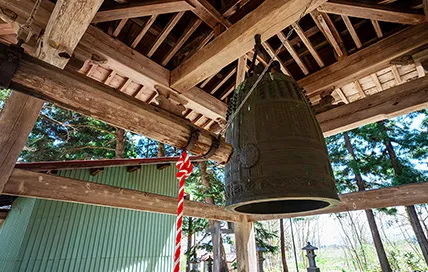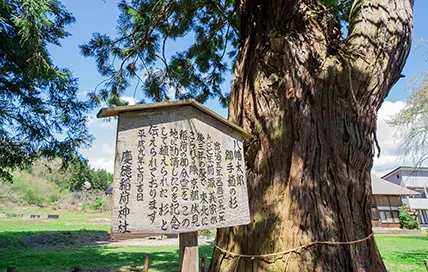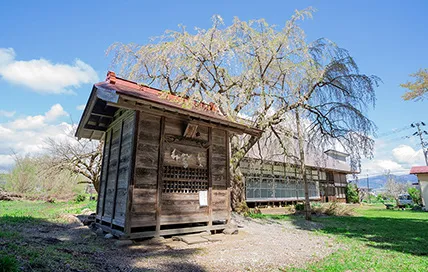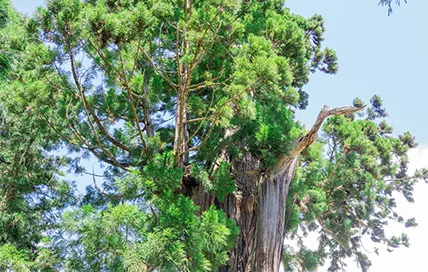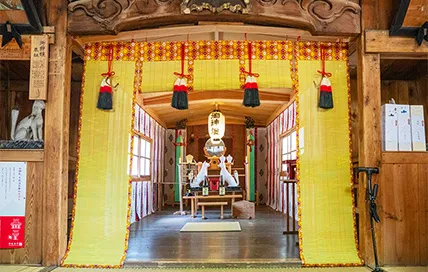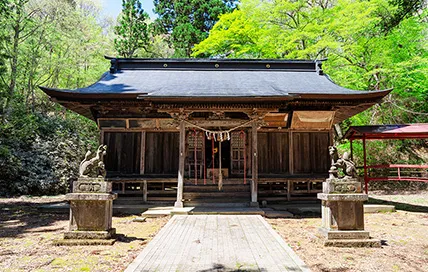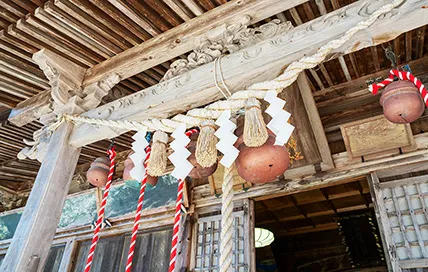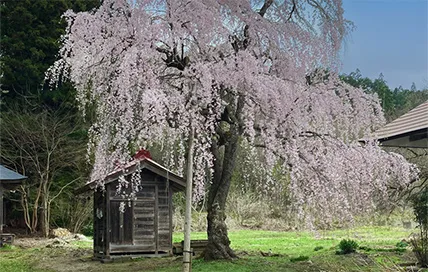
Enshrined deity and origin
Keitoku Shrine is located southwest of Keitoku Town.
There are various theories about its origins, but according to the shrine’s traditions,
it was founded in 1091 when Minamoto no Yoshiie, who was on his way to put an
end to the
wars between Mutsu and Dewa provinces, invited the deity to be enshrined
here along with
Shingu Kumano Shrine in the same town.
Enshrined deity and origin
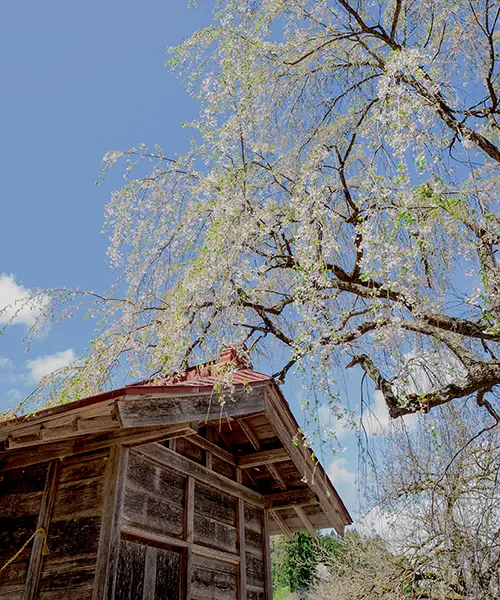
About KeiAbout Keitoku Inari Shrinetoku Inari Shrine
This shrine was founded in the fifth year of the Kanji era (1091 AD).
The Shogun of the Midai Naval District at that time, Minamoto no Yoshiie, visited this area to subjugate Kiyohara
Takehira and Kiyohara Iehira, and invited the Inari Shrine enshrined in Kyoto’s Fushimi Inariyama to this area
and donated the shrine land. The head priest of this shrine was Suzuki Kurodo Motoyuki, the ancestor of the current
chief priest.
Suzuki was a mountain ascetic of the Kumano Sanzan mountains and is said to have played a very important role
in the founding of this shrine.
Founding of Keitoku Inari Shrine
The founding and worship of this Inari Shrine dates back to the 5th year of Kanji, when Minamoto no Yoshiie,
the Shogun of the Chinjufu under Emperor Horikawa, descended upon Oshu to subjugate Kiyohara Takehira and
Kiyohara Iehira, he promoted the Inari Shrine enshrined on Mount Fushimi Inari in Kyoto to this site and
donated a sacred land. It began when a man named Suzuki Kurodo Motoyuki (an ancestor of the current priests
of this shrine, the Hozumi clan) accompanied the god and became the head priest of this shrine.
After that, due to the change of lords and the continuous wars, the shrine also declined, the shrine building
fell into disrepair, and only a few large cedar trees, known as sacred trees, flourished. In the spring of the
third year of the Oei era (1396), the founder of the village Keitoku-ji temple, Gen’o Osho, decided to restore
the dilapidated shrine after hearing a message from a spirit woman in a dream. He remodeled the shrine building
and improved the grounds, restoring it to its former appearance through fundraising activities. Since then, many
people, including the lord and the local lord, have diligently repaired the shrine building, and on the first
day of the horse month in February and November every year, offerings of a hundred delicacies from the sea and
mountains are made, and pilgrims come from nearby areas to visit the shrine as a god of divine virtue and miraculous
power, and the village prospers along with the prosperity of the shrine. It is believed that the rice produced
by Keitoku-gumi is superior to that of other places, thanks to the deep blessings of this great god.
Since the Hoshina clan arrived in Aizu in 1643 as lords, they have had deep reverence for the Inari Shrine,
posted signs prohibiting violence, murder, and the cutting down of trees within the shrine grounds, and
designated it as a place of prayer.
On major festival days each year, they would send representatives to offer heihaku (gifts offered to the altar),
recite prayers, and pray for bountiful harvests.
On December 29, 1800, the Imperial Court proclaimed him to be a Shoichii (first rank) god.
The ritual of the rice planting festival is our shrine’s largest festival event. It is held on the day of the seventh month of the year of summer, and a portable shrine accompanied by many offerings is carried around the town, placed in the rice field, and a ritual is held in the rice field, praying for a good harvest. The rice planting song also has a long history, and is said to have been created about 500 years ago. The rice planting festival fell into disuse around the year of Meireki (1657), but when it was revived in the year of Tenpo (1834), the original rice planting song was supplemented by Sawada Naoshige, a great scholar and poet of the Aizu clan, and Uragami Shukin, a samurai of the same clan who was also skilled in gagaku, composed the song in the style of “Etenrakucho”, and it has been sung to this day.
The four deities
The God of Uka
The deity enshrined here, whose name begins with “Uka,” meaning food or grain, is said to be the god of food and the spirit of rice. He is the god of bountiful harvests and appears in the Kojiki and Nihon Shoki.
Susanoo no Mikoto
He is the son of Izanagi and Izanami, who are said to be the ancestors of many gods, and is considered a hero who defeated the Yamata no Orochi in Izumo Province. Due to his courageous and fearless character, he is a deity with strong powers of protection against evil spirits.
The god of lordship
Oonamuchi no Kami
Also known as Okuninushi, he is the main deity in the Izumo mythology, known for “The White Rabbit of Inaba”
and “The Land of the Roots.”
He is also known for granting various benefits, such as matchmaking, prosperity in business, and recovery from
illness.
Sukunahikona no Kami
A god who founded the country of Izumo together with Daimyo-muchi-no-mikoto. He is the god of medicine, hot springs, and sake brewing, and is also known as the god of industry. It is said that he brings blessings such as the elimination of illness and disasters, industrial development, and national peace, which are closely related to the enshrined deity.

